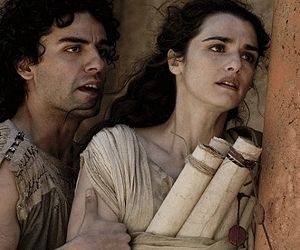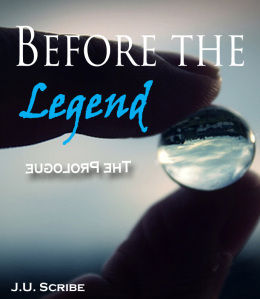J.U. Scribe's Blog, page 12
July 12, 2013
Don’t Judge a Book by its Cover!
You’ve heard the age old expression: “Don’t judge a book by its cover.” However in the world of publishing that is simply not the case! As I mentioned in an earlier post it’s important for your work to stand out from the sea of thousands of new books that are published each year. The book cover is usually the first thing a reader sees so it’s important to make a good first impression. A cover can either make a person want to pick up or click on your story or quickly dismiss it.
I make the general statement that people are often visual. This is true to some extent for many people including myself. We make judgments about that book based on the cover art and the typography used. It can tell us what is the age demographic of the book (eg. cartoony drawings or bright colorful imagery is associated with younger children). It can also give a clue about the genre. For instance any book that utilizes sex appeal, we can almost automatically assume it’s a romance novel. People tend to be drawn to attractive characters, which is an inevitable fact that readers and marketers exploit.
What makes a good cover? What makes a great cover? The second question is a little harder to answer. But in order to have a great cover, the image used needs to engage the viewer. An image that can grab the viewer’s attention or evoke an emotion is often more powerful. Granted professional graphic designers can be of great help in this dept. But even if you aren’t there are simple things to keep in mind when designing a cover.
1. A solid, high-quality image(s)
2. Appropriate typography. This is almost as important as the image itself. Basically you want your title to be legible. This is important especially when the cover is shrunk to a thumbnail if you’re selling it as an ebook. The title needs to work with the overall aesthetic of the image. Good typography should fit the mood or type of story. More can be discussed about good typography but this is just the basics.
3. A good photo editing program. Photoshop, InDesign, Illustrator are good choices. Photo Elements is less expensive than Photoshop and has most of the powerful editing features Photoshop has. Free options include ones like Gimp which will work too.
You will note in the header bar some of the covers I created for my books. I propose the newest cover for my book, “Before the Legend.” I’m not a professional graphic designer (although I love designing) but I really like the finished result. The image can be used commercially which is very important (I still tried to consult the owner of the image to cover my bases).
Let me know what you think about my new cover above. Should I use it?…


June 20, 2013
Lights, Camera, Action!

(Scene from Agora)
How well can you visualize the scene bleeding through the pages? Do the descriptions grip your senses and emotions? Is the dialogue well-balanced and fitting? Each scene of the story should help propel the plot forward. I like to imagine every scene in my story like a movie. Visualizing the characters appearance, the way they deliver their lines and actions in a given scene helps makes the story come alive in your mind and in turn the scene should be real to the readers.
Each chapter can be likened to a mini story. Each chapter should have a main plot, a beginning, middle, and an end which can be a cliffhanger. I tried to create a thematic scene with the latest chapter to Chasing Blue now available at the link. “Dead End” was a chapter I was anticipating on writing for a long time because it’s the final tipping point to the whole story and forces Troy to come to terms with his past. In the chapter you have the setup which picks up from the cliffhanger from the previous chapter (you’ll have to read chapter 27 to know what I’m talking about). The thrust of the chapter is that Troy and his friends plan a tour around Rome so Julia and Clitus can be together. However things go off plan, and that’s what makes it interesting and dangerous all at the same time. Cliffhangers? You bet!
While I don’t expect my stories to turn into movies that doesn’t mean you can’t make it thematic. Here’s a book trailer I made for my story Chasing Blue. In line with the last post, part of my advertising strategy is creating a video showcasing the plot of the story. I plan to create a book trailer for Before the Legend so stay tune.


June 13, 2013
Advertise. Advertise. Advertise.
 (Impirus)
(Impirus)
You have an amazing book you are writing up (or at least you think its amazing). You are ready to self-publish, if that is the route you’ve chosen, but without proper promotion or marketing, your book is lost in a sea of books numbering in the thousands. According to one figure on average 17 books are being published every hour, and by the end of the day that total jumps to 408 alone. The task of making your book stand out becomes increasingly challenging.
Unlike submitting your book through a publishing company, those that self-publish are virtually on their own when it comes to marketing their book. Granted some self-publishing sites like Lulu and Booktango offer packages that have their representatives taking up the task of marketing your book. Even then it’s important to weigh the cost of the marketing packages and the different marketing ploys that would be employed. The real test is to evaluate whether those marketing strategies are worth the money. It can be measured mainly by tangible results, primarily book sales which = $. Getting statistics or actual testimonials/reviews by previous users are an added bonus when choosing a package. Even those that choose major publishing companies that usually promise to market your stories, you may still want to take advantage of spreading the word about your book to gain garner further publicity.
There is technically no secret formula to successfully market your book and becoming a best-seller (unless someone knows something that I don’t). However even if you’re like me and don’t care to be a best-seller there are still ways to maximize reaching your target audience. One of the ways I plan to go about is a grassroots approach. Don’t forgot this often overlooked method: word of mouth. This means talking your book up amongst friends and family and even other connections (colleagues, classmates, etc). Other ways to get exposure is by creating a blog (like I did lol) or a website to your story. But drawing traffic to your site is a whole other topic to discuss. Building a following can be slow but that’s where social media can come into play such as Facebook where you can take advantage of its advertising capabilities and connect with followers. I hope to create a Facebook page for my story which is still in the works. Right now I will be using my WordPress blog as my site instead of building a new one as originally planned. Stay tuned for more insight on “standing out” focusing on just the story itself. Also stay tuned for my story updates.
Check out Royalty-free images sponsored by Dreamstime –> http://www.dreamstime.com/#res5346690






